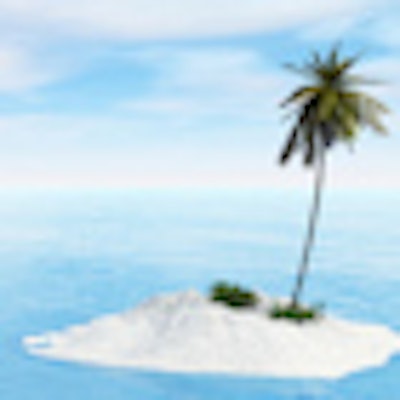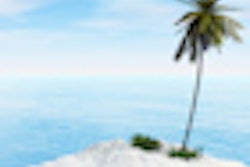
While it may philosophically be true that "no man is an island," for today's direct dental restorative procedures, the tooth should be. Now that adhesive dentistry is the standard of care, a composite or all-ceramic crown bonded in a wet field won't stay put long enough to check the occlusion. In fact, proper dental isolation/evacuation is one of the most underrated factors affecting the longevity of the restoration and the clinician.
The goals are simple but critical:
- Eliminate moisture contamination
- Decrease tissue trauma
- Improve operator workspace and visibility
- Decrease chair time for procedures
- Increase patient safety
- Reduce ergonomic strain
The traditional techniques for isolation/evacuation include retraction with mirrors/tongue blades, saliva ejectors (SEs), high-volume evacuators (HVEs), and rubber dams. But increasing patient expectations and rapidly advancing technology in hydrophobic adhesive techniques have resulted in a surge of new products to meet the needs of both patients and operators.
Doctors and hygienists who consider extra illumination, mouth props, and rubber dams an unnecessary expense might first consider reframing the benefits from a patient's perspective. For example, the majority of my patients who have never been given the option of using a bite block end up loving it! Inexpensive, disposable bite blocks eliminate the chore of staying open wide enough (patient's benefit) or being constantly reminded to do so (doctor's benefit). Also, patients experience minimal, if any, postoperative temporomandibular joint (TMJ) discomfort.
Mouth props, however, only solve part of the problems we face trying to create a dry field in a naturally wet environment. A large percentage of restorations fail because of moisture contamination. Even moisture insensitive adhesive systems will not work in a puddle. Japanese researchers at Nippon Dental University evaluated the bond strength of orthodontic brackets placed using moisture insensitive primer (MIP) adhesive systems and concluded that "to achieve clinically sufficient bond strengths with the hydrophilic MIP adhesive system, excess water should be blotted from the water-contaminated enamel surface" (Odontology, July 2008, Vol. 96:1, pp. 50-54).
In this study, desiccated and blotted dry teeth had less frequent bond failures than overwet conditions, according to the researchers. While dental practitioners understand the negative, postoperative consequences of desiccating teeth, most manufacturers still recommend removing excess moisture from the working field for ideal results.
Toward moisture-free
So what are some good options for evacuating fluids from the oral cavity? Consider modable hygoformics. The original hygoformic saliva ejector (J.H. Orsing) was invented in the late 1950s by a refrigeration engineer named Harry Orsing who was inspired by an unpleasant experience as a dental patient.
Moldable hygoformics serve the dual function of suction and tongue holder. They work well for hygienists applying sealants or as an adjunct to the HVE for a patient with heavy salivary flow.
The primary con of a hygoformic is that it doesn't stay in place if the patient has a strong tongue or weak chin. Also, the suction on the floor of the mouth can cause tissue irritation similar to a regular SE. Some operators place gauze between the device and the floor of the mouth to prevent this problem.
Zirc manufactures SE cushions for standard SE that its website claims prevent tissue irritation and quiet the noise of suction. That's great, but most restorative procedures demand noisy HVEs. Aspirator tips are also available for HVEs, but in my experience they decrease the suction.
Another alternative is combination isolation/evacuation devices that do more than just remove moisture. For example, Dentapops (Primotec) is a disposable three-in-one device providing mouth prop, suction, and tongue deflector. The patient bites on the mouth prop to stabilize the device. A glowing review in Dental Economics (May 2002, Vol. 92:5) concluded, "It is excellent ... for all operative procedures on both arches ... the dental assistant can use the extra time to attend to other tasks for greater efficiency."
Beyond dental dams
OK. The area is dry, the tongue war is won, and the patient is comfortable. But is he or she protected?
Let's be honest: Most general dentists don't like rubber dams. We agree that they are an invaluable adjunct for isolation during endodontics and very effective at protecting patients from aspirating debris or a file. But until recently, it seemed to take forever to place a rubber dam and they often came off during x-rays.
A number of companies now make instant dams with built-in, flexible frames that are easy to place, accommodate film placement, and are made of softer material that patients can better tolerate. Dams also provide some lip retraction, which improves visibility. But they still take more time than plopping in a mouth prop and a cotton roll.
In addition, dams don't make those upper posterior teeth any easier to see. We still need a little more light on #3, please. Fiber optics are great, until you just want to examine your prep with an explorer and mirror.
Enter Isolite Systems, with a relatively inexpensive alternative to spotlights on your loupes for the dentist who needs everything and the patient who thinks five objects in their mouth is a bit much. The Isolite provides illumination, continuous suction, tongue and cheek retraction, a bite block, and, unlike similar products, throat protection. The makers claim dentists who use this product have 30% faster procedures and reduced ergonomic strain.
John Tomasino Jr., D.D.S., a general dentist in Morrison, IL, is a fan of the Isolite, although he doesn't use it on every procedure. He does use it a lot, though, especially when working on the lower left quadrant where it allows him to use his mirror for visualization, not retraction.
He also told me that he employs the Isolite for Cerec restorations: In this case, "it's a real time saver because it keeps everything isolated and there is less powder everywhere. There are also a lot less interruptions on patients with a strong tongue." The only drawback he's found is the noise level, but sometimes that's helpful for fearful patients, he said, because it drowns out the sound of the drill.
The Isolite seems to meet all the criteria for isolation and evacuation, but it's just one option. A combination of other products can achieve the same results. The point is, when performing the cost-benefit analysis of purchasing any of these products, remember to factor in patient safety, your time, remakes, and joint pain before you decide to "go with the flow."
Monica "Dr. mOe" Anderson, D.D.S., is a general dentist, writer, and motivational speaker in Austin, TX.
Copyright © 2010 DrBicuspid.com



















